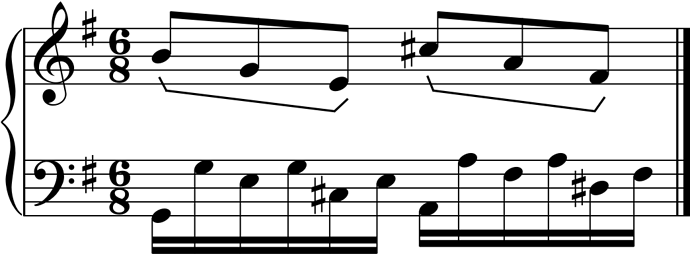The answers to your questions are long and complicated.
First, for Baroque I think we can discount Finale and Sibelius for a host of reasons. I bought Dorico - it’s quite expensive - and while it is a really good engraving program and has a lively and responsive user forum (done in Discourse the same as what I am using for Jackrail, by the way) it is entirely focused on contemporary cinematic scoring, jazz, Common Era music and so on. Using it for work outside these major customer areas gets difficult if not impossible, and one of my critiques of Dorico as a product/company is that as somebody who does both Baroque and modernist New Complexity School engraving, when you step outside Common Era music engraving rules you get long lectures on why you should not write in this that or the other way and why they will never change or update Dorico to add badly needed features because they are for a tiny customer set. I wish they would come down off their high horse someday. For example, putting notes in the centre of a bar - common Baroque practice, and, amusingly also common in modernist scores - is well nigh impossible. Dorico is heavily rule bound and that helps students and scorers in a hurry, by not allowing you to make mistakes, but you can’t override the rules to suit different forms of music. If it’s not regulated by Elaine Gould in Behind Bars, forget about it. Hopefully this will change in the future. Dorico is only five years old.
Now I used Lilypond for ten years and it is the most powerful engraving program by a long shot. But being text based data entry with a particular relatively complex syntax it has a steep and long learning curve. Lilypond was developed by two Dutch programmers who were also musicians. In the very earliest days 25 years ago there was some influence from MusicTeX but that is long gone by now and it would not really be right to say it is part of the TeX family. There’s a superficial syntactical similarity, and it is likewise text based, but that’s where it ends. Lilypond output is supremely excellent without tweaking, but every detail can be tweaked and adjusted to as fine a degree as you want. Lilypond is open source. It is highly extensible by writing code in Scheme, a very nice member of the Lisp family of programming languages, but again complex with a long learning curve. I have a library of Scheme functions I wrote over years to extend Lilypond to do all sorts of ‘impossible’ things.
One person has written and extensive library of French Baroque articulations which are very nice, but it is quite technical to get it going.
The only reason I switched from Lilypond to Dorico is that Lilypond is a compiled language and even on my fast processor the 300 page (not a typo) string quartet I was engraving was taking twenty minutes to compile and if you have to change one note as a correction you are in for a twenty minute compile again. Lilypond is by design and musical necessity single threaded, so having more cores does not speed it up/ After a while this became untenable for me. But for shorter pieces it’s superb.
As an aside Lilypond has first class support for Gregorian chant and medieval music and so on.
While MuseScore has many virtues, compared to Lilypond the output always looks inferior. You can spot a MuseScore engraving instantly. It’s not to my taste. Last time I looked at MuseScore it could not do triple dotting - essential for Handel for example. While I suspect they have addressed that I think you cant do more dots - and so you cant use it for modernist scores etc.
Lilypond has very strong support for arbitrary lines and curves and you can even write in Postscript if you like. The main virtue of Lilypond is that it is unlimited and can be made to do anything you can throw at it. It’s the only program that can be said of.
There’s a graphical developement environment called Frescobaldi which is nice but collapses on very large scores. I use vi with some clever integration for the work - it’s really great. [No need to mention the best environmen for Lilypond is Linux. Way better that the Windows and Mac versions.]
Just coming back to Dorico, there is a commercial font called November 2 that does pretty nice Couperin. Here’s the sample page from the font developer:
https://www.klemm-music.de/notation/november2/en/index.php
But I don’t think Dorico can do the angled slurs!
Enough for now. This is a complex topic.

